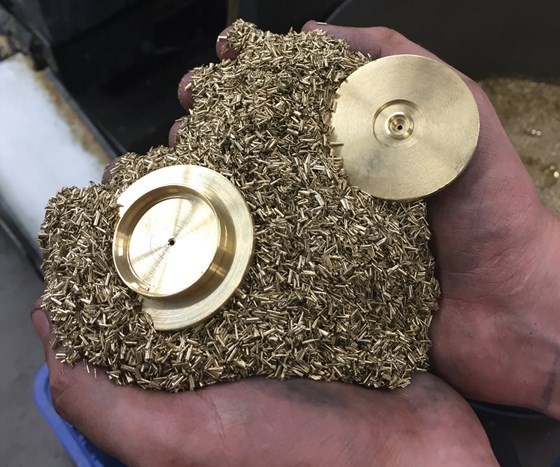Shop Finds Success in the Dark
This article details the experience of one Swiss-type machine shop that instituted lights-out machining as part of its production regimen.

For lights-out machining, brass is a good material choice because of its relative ease of machining, which reduces tool wear over a long production run.
Lights-out machining has moved beyond a goal and into reality over the past decade. Advances in techniques and reliability of capital equipment are fueling the proliferation of unattended production.
We published an article, titled “Filling Bins While the Building is Empty,” which details the experience of one Swiss-type machine shop that instituted lights-out machining as part of its production regimen. The article discusses the driver for the shop to use lights-out machining and looks at the decision-making process it goes through to select job candidates to run unattended. Not all work is applicable.
This story is a good read for shops that are on the fence about how and when to try running without intervention. If done right, lights out can provide dramatic results. Getting there is the trick, and the shop that is featured in this story offers a good example of how to succeed with lights-out production.
RELATED CONTENT
-
The Many Sides of Workholding
Here's a broad look at different ways to approach workholding, from bar feeders to collet chucks to robotics.
-
Bar Feeder Basics
Some primary factors are often overlooked when considering how to justify the implementation of a bar feeder for turning operations.
-
Choosing an Automatic Bar Feeder
The bar feeder is the most common form of automation for turning operations. Selecting the right one requires consideration of the applications for which it will be used.



